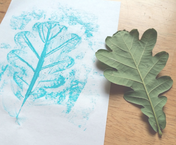4K Science Journals
Children are natural observers. They see and question things throughout the day. As 4K teachers, we should foster their observation skills and guide them in observing their world more closely and asking more questions.
Teachers should prompt students to ask questions about their observations. When students ask questions of the teacher, the teacher should ask the student, “How could we find out?”
- All of our 4K students should have a science journal for drawing what they observe.
- These journals may simply be several sheets of typing paper, folded in half and stapled 3 times to make a booklet.
- Students should date their work (9-8-2020) as they are learning to write their numbers or in the September 12, 2020 format if they are learning the months.
- Their notebook will be a record of the things they have seen. For 4 year-olds, it will likely consist mostly of their sketches and pictures the teacher may have photocopied for the students to color and label.
Teachers should prompt students to ask questions about their observations. When students ask questions of the teacher, the teacher should ask the student, “How could we find out?”
4K Science Areas of Focus

Measurement Link
Making Observations
Observing Plants
- Students trace their shoe/foot and cut out the shape. They use this as "1 foot" to measure things around the room.
- The teacher has the class (or group) line up at the board in order from shortest to tallest, then a mark is made on the board to show each person's height.
- Students predict which object has more mass. Students test their predictions with a balance.
- Students attempt to balance a given amount of water with marbles or rocks on a balance.
- What happens when one cup of water is added to another cup of water? What happens if the cup is not large enough?
Making Observations
- Students are given a packet of salt to dissolve in water. This can also be done with packets of sugar.
- Have them first look at the salt/sugar crystals with a magnifying lens. - Students are given a packet of pepper to dissolve in water. Why doesn't it dissolve like salt?
- Students add drops of (dilute) liquid food color to water to observe what happens.
- Students place a drop of (dilute) liquid food color onto an ice cube to observe what happens.
- Students sketch an ice cube, then pour warm water over the ice cube and stir to observe what happens.
- Students cut shapes from PlayDoh (or salt dough) then leave the shapes out to dry. The students can even make the salt dough!
- Students collect different types of soil in small plastic baggies. They observe, draw, and feel each.
-They create a poster gluing down the soil as they would glitter.
-They add equal amounts of water to each baggie to compare how each type of soil reacts to water.
-Students may filter the water out of the soil.
-Students may then allow the damp soil to dry overnight. - Students collect various rocks to make a class rock collection. They observe, draw and feel each.
Observing Plants
- Students collect leaves, press them and glue them.
- Students make leaf rubbings and study the vein pattern in various leaves.
- Students study flowers with magnifying lenses.
- Student plants seeds and care for them.
- Teachers collect insects for students to view in magnifying boxes. Crickets and guppies can be provided.
For Science supplies, please email jparker@rhmail.org.
Please be specific in your request.
Please be specific in your request.

